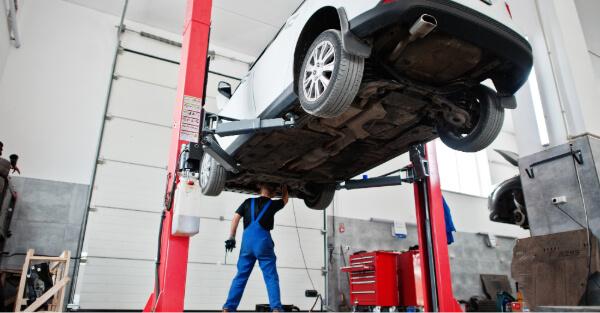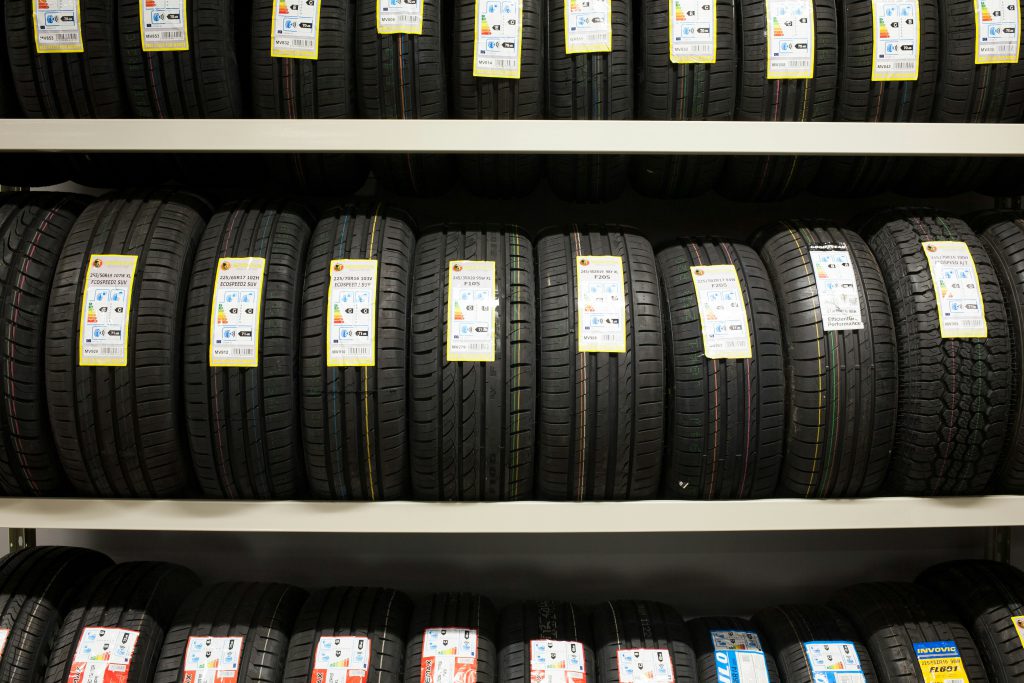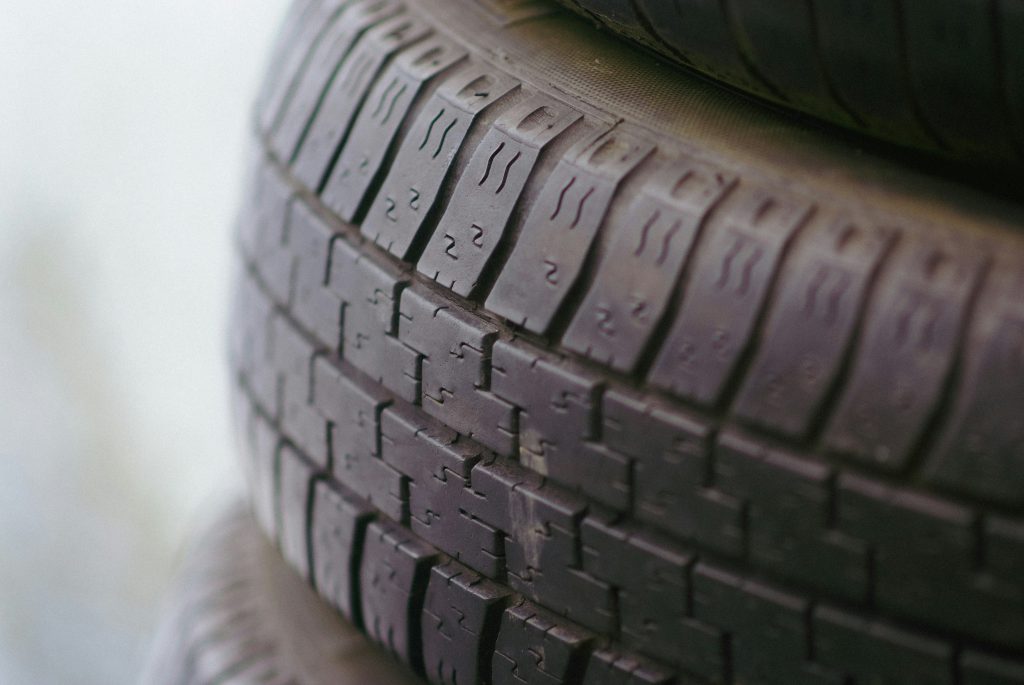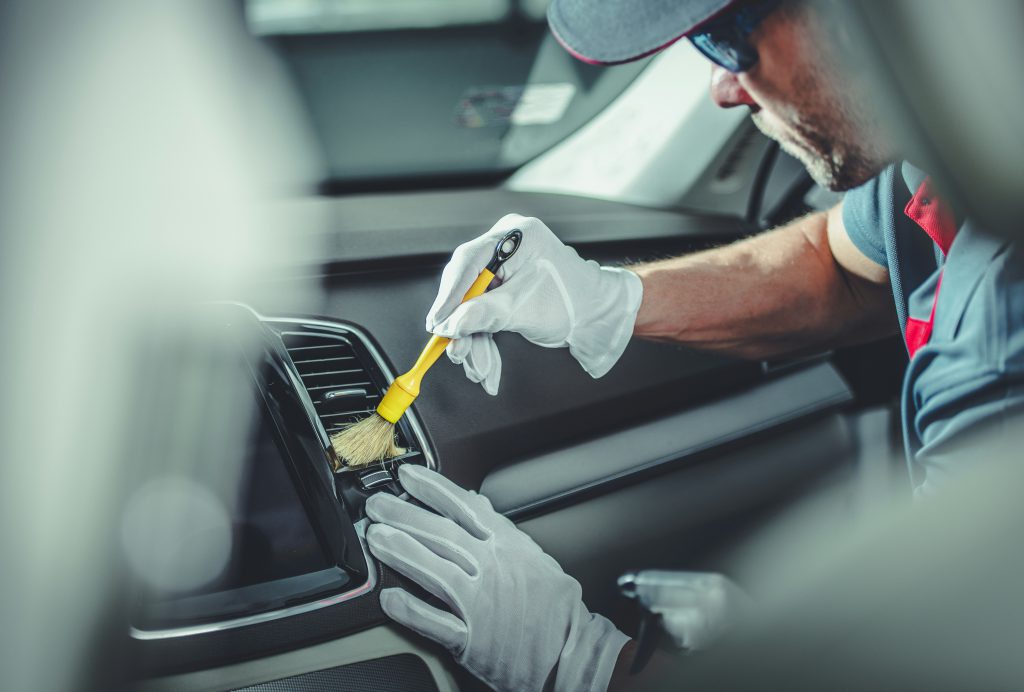Key Takeaways
- Tire changes are essential for vehicle safety, performance, and longevity, with the replacement recommended when tread depth falls below 1/8 of an inch or when irregular tread wear is observed.
- Choosing the right tires involves considering factors such as tire size, type (e.g., all-season, performance, winter), and seasonal requirements to ensure optimal vehicle performance and safety.
- Proper tire maintenance includes regular tire rotation, pressure checks, and alignment to extend tire lifespan and improve handling, while understanding spare tire basics is important for emergency situations.
Signs It’s Time for a Tire Change
Changing tires isn’t just about keeping your vehicle looking its best. It’s about safety, performance, and the longevity of your car. Understanding tread wear is key to knowing when it’s time for a tire change. Tire tread depth grips the road surface, channels water to prevent hydroplaning, and plays a crucial role in maintaining traction which is important for performance and safety. Vehicle performance can be significantly diminished before tread hits the critical minimum of 1/8 inch, indicating a need for a tire change.
Reading your tire’s tread is the key to determining when a change is necessary. A thorough check of your tire tread depth at multiple points can reveal uneven wear, signaling the need for a tire replacement. Below, we’ll delve deeper into signs like uneven tread wear, visible tread wear bars, and decreased vehicle performance that may indicate it’s time to replace your tires.
Uneven Tread Wear
The tire tread tells a story. It can indicate if your tires are wearing evenly, or if certain areas are more worn than others. Uneven tread wear can be detected by inspecting the tire for patches or areas that are more worn down than other sections. Uneven tread wear isn’t just an aesthetic issue; it can significantly affect your vehicle’s performance and safety.
You might be wondering how to check tire tread depth. It can be measured using a tread depth gauge or by performing the penny test. Regularly checking your tire tread depth can help you identify uneven tread wear early, allowing you to take necessary actions like tire rotation or replacement to ensure your vehicle remains safe and efficient on the road.
Tread Wear Indicator Bars
Tread wear indicator bars, built into tires, are visual indicators for assessing remaining tire tread depth. When tire tread is worn down to the level of the wear bars, it indicates that the tire has reached the legal tread depth limit and should be replaced. To ensure optimal performance, regularly inspect the tread block on your tires.
Worn-out tires can have a dramatic impact on your vehicle’s performance. Uneven tread depth can lead to increased braking distances, which may be hazardous in emergency situations. Longer distances may not seem like a big deal, but when it comes to braking in an emergency, every inch matters.
Underinflated tires can worsen this situation, reducing handling responsiveness and increasing the risk of blowouts due to excessive heat from sidewall flexion. This not only compromises your safety but also the longevity of the tires. Recognizing the signs of decreased performance and taking action can save you from potential hazards and costly repairs.
Choosing the Right Tires
The right choice of tires plays a vital role in vehicle upkeep. After all, not all tires are made equal. Depending on your vehicle’s specifications, driving habits, and environmental conditions, the ideal tire for your needs may vary. Let’s dive into the specifics of choosing the right tires, including understanding tire size, types of tires, and considering seasonal requirements.
Your vehicle’s owner’s manual and the tire information placard provide essential details about the recommended tire size and specifications. Beyond size, the type of tire you choose can significantly impact your driving experience. All-season tires, performance tires, and winter tires are all designed with specific uses in mind.
Lastly, don’t forget about the climate. If you live in an area with severe winter conditions, switching to winter tires during the colder months can improve safety.
Tire Size
Tire size matters more than you might think. Ensuring you have the correct tire size for your vehicle is crucial for safety and optimal performance. Determining the correct tire size might seem challenging.
While the vehicle owner’s manual is a reliable source, you can also find this information on the sidewall of your current tires. The tire size is indicated by a series of numbers and letters, which represent the tire width, aspect ratio, and wheel diameter. Ensuring that your new tires match these specifications will provide a comfortable, safe ride and optimal performance.
Types of Tires
The variety of tire types on the market can be overwhelming, but each type serves a unique purpose. A good grasp of the various tire types can guide your decision-making when tire replacement becomes necessary.
There are several types of tires available, each designed for specific purposes:
- All-season tires: These offer a balance of capabilities and provide suitable performance in a variety of weather conditions.
- Performance tires: These are designed with enhanced handling and high-speed capabilities for more dynamic driving experiences.
- Winter tires: These are engineered with special rubber compounds and tread designs that provide better traction in snow and ice.
- Run-flat tires: These allow for continued driving after a puncture, providing convenience and safety by removing the immediate need to change to a spare tire.
Seasonal Requirements
Seasonal requirements play a significant role in choosing the right tires. If you live in an area with severe winter conditions, winter tires, also known as snow tires, can provide improved traction and safety during winter driving conditions.
Selecting the appropriate tire for your driving climate is pivotal for maintaining vehicle safety and efficiency. So, whether you’re navigating wet roads in the spring or snowy paths in the winter, make sure your tires are up to the task.
The Tire Change Process
Armed with knowledge on when to change your tires and how to select the right ones, let’s navigate the tire change process. Changing a tire involves safely removing the old tire, accurately mounting the new tire, and ensuring proper balancing and alignment for optimal performance.
We’ll dissect each of these steps for better understanding.
Removing the Flat or Worn Tire
The first step in the tire change process is safely removing the old tire to replace tires. This might sound straightforward, but doing it right requires the correct tools and safety precautions, especially when dealing with tire repair. A jack and a wrench are necessary for this process.
The process of changing a tire involves the following steps:
- Position the jack under the vehicle’s designated jack points and raise the vehicle off the ground, ensuring the rear axle is properly supported.
- Carefully remove the lug nuts using the wrench.
- Pull the flat or worn tire straight off the wheel assembly to complete the removal process.
Mounting the New Tire
After safely removing the old tire, it’s time to mount the new one onto the wheel. The edges of the rim and the beads of the tire should be lubricated before mounting to allow for easier installation and to prevent damage.
The new tire’s mounting process includes the installation of the valve stem, which is essential for maintaining proper tire pressure. To mount the tire onto the wheel correctly, it must be positioned accurately on a tire mounting machine, or if done manually, with pry bars.
Balancing and Alignment
Once you’ve mounted your new tire, it’s important not to overlook the final steps of the tire change process: balancing and alignment. These steps ensure that the new tire is properly settled into place and contributes to the vehicle’s overall performance.
Balancing the wheels is crucial to preventing vibration and contributing to uniform tire wear. Properly balanced tires are vital for preventing vibrations that typically occur between 55 and 65 mph, improving driver comfort and tire longevity.
Following balancing, wheel alignment should be performed to ensure the wheels are set to the optimum position as per the vehicle manufacturer’s specifications.
Tire Maintenance Tips
Now that you’ve successfully changed your tires, the journey isn’t over. Consistent maintenance contributes significantly to the lifespan and functioning of your tires. We’ll discuss some beneficial maintenance tips encompassing regular tire rotation, tire pressure checks, and alignment checks.
Maintaining the correct air pressure in tires is critical for tire safety, performance, and longevity. It should be checked at least once a month. Regular tire rotation is also recommended every 5,000–7,000 miles to ensure even wear and extend tire life. Lastly, proper wheel balancing and alignment are important for maintaining even tire wear, overall vehicle performance, and safety.
Tire Rotation
Regular tire rotation is a simple yet effective maintenance practice. By rotating your tires every 5,000 miles, you can promote even wear, consistent traction, and improved fuel economy.
Even tread wear achieved through tire rotations can improve vehicle stability and handling, which is critical in adverse weather conditions. Tire rotation serves as a preventive measure to avoid uneven tire wear, thus extending tire life and enhancing vehicle safety.
Tire Pressure Checks
Tire pressure checks are another critical aspect of tire maintenance. Checking tire pressure at least once a month and before any long trips helps maintain optimal tire performance and safety.
The vehicle owner’s manual or tire specification decal on the vehicle should be referenced for proper tire pressure values, not the pressure indicated on the tire sidewall. For accurate tire pressure readings, it’s best to check the tires when they are cold, before the vehicle has been driven or after it has sat for a few hours. Don’t forget to check the spare tire’s air pressure as well.
Alignment Checks
Wheel alignment is another key aspect of tire maintenance. Uneven tread wear on tires can be due to several factors such as:
- Improper inflation
- Misalignment of wheels
- Weight distribution issues
- Specific driving habits
Wheel misalignment is a primary cause of uneven tire wear, which can result in reduced tire longevity and negatively impact overall vehicle performance. Regular alignment checks can help ensure your tires wear evenly, enhancing their lifespan and maintaining your vehicle’s performance.
Spare Tire Basics
Spare tires can be likened to insurance – not something you want to use, but invaluable when needed. A basic understanding of spare tires, their varied types, and usage guidelines can prevent unnecessary hassle during a flat tire scenario.
Spare tires are an essential backup for drivers, allowing them to replace a flat or damaged tire temporarily. There are mainly two types of spare tires: compact temporary spares, known as ‘donuts’, and full-size spares that match the regular tires. Temporary spares are intended only for short-term use due to their smaller size and reduced durability. When driving on a spare tire, you should not exceed 50 miles per hour and should aim to replace it with a permanent tire as soon as possible, generally within 70 miles.
Types of Spare Tires
Spare tires come in different shapes and sizes, each with its unique features and purposes. Understanding these variations will help you make the most of your spare tire in the event of a flat tire.
Spare tires are available in different categories, including donut spares, full-size spares, and expandable/inflatable spares. Full-size temporary spares are designed to match the dimensions of the vehicle’s original tires but generally feature lighter construction to save weight, contain less tread depth, and are often equipped with steel wheels. Compact temporary spares, on the other hand, require higher inflation pressures, and are to be used only with the vehicle they came with.
Usage Guidelines
Spare tires are not designed for long-term use. While they provide a convenient solution in the event of a flat tire, it’s important to understand their limitations to ensure safe driving.
Temporary spare tires, also known as donut spares, are intended for short-term use and should not exceed 50 miles per hour or a distance of 50 miles. These temporary spares are not designed to match the load capacity, speed capability, or all-weather traction of conventional tires, necessitating careful driving and adherence to usage restrictions such as not towing a trailer.
On the other hand, full-size spares can be used for longer distances as long as their condition and air pressure are checked and maintained according to the manufacturer’s specifications. Some vehicles come with expandable or inflatable spare tires that need to be inflated before use.
Summary
We’ve covered a lot of ground, from recognizing when it’s time for a tire change, choosing the right tires, the tire change process, to tire maintenance tips, and spare tire basics. While it may seem like a lot to remember, it all boils down to safety and performance. Regular checks and maintenance can significantly extend the life of your tires and enhance your driving experience. So, next time you hit the road, remember, it’s not just about the journey or the destination, it’s also about the tires that get you there!
Frequently Asked Questions
How do I know when it’s time to change my tires?
You should change your tires when you notice uneven tread wear, visible tread wear indicator bars, or decreased vehicle performance. Regularly checking your tire tread depth can help you spot signs of wear early on.
What factors should I consider when choosing new tires?
When choosing new tires, consider the correct tire size for your vehicle, the type of tire based on your driving needs, and the climate and seasonal requirements. These factors are essential for ensuring optimal performance and safety.
What is the process of changing a tire?
The process of changing a tire includes safely removing the old tire, accurately mounting the new tire, and ensuring proper balancing and alignment.
What are some maintenance tips for tires?
To maintain your tires, make sure to regularly rotate them, maintain proper tire pressure, and schedule regular alignment checks. These practices are essential for ensuring the longevity and performance of your tires.
What are the basics I should know about spare tires?
Remember, spare tires are meant for temporary use and should be replaced with a permanent tire as soon as possible.













